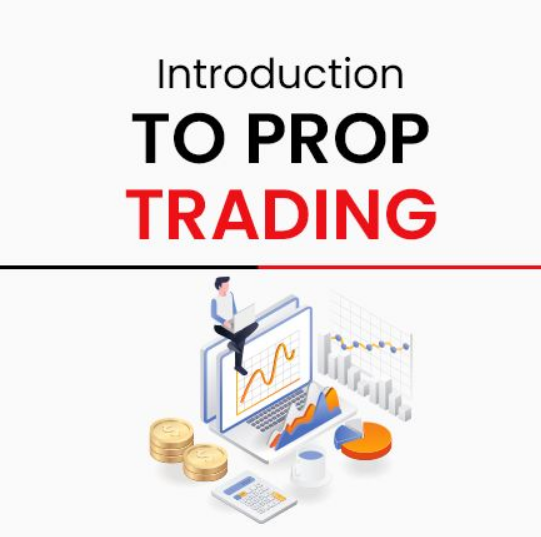Beginner’s Guide to Prop Trading: Expert Strategies & Tools
Prop trading is a dynamic field offering both lucrative opportunities and complex challenges. Our guide provides a hands-on approach with proven strategies, advanced backtesting techniques, and practical insights from industry experts. Whether you are a junior trader or a seasoned quant, this comprehensive resource addresses common pitfalls, outlines key performance metrics, and offers actionable steps to enhance your prop trading skills.
Introduction to Prop Trading and Backtesting Fundamentals
Prop trading, the practice of trading financial instruments using a firm’s own capital, requires a robust understanding of market dynamics and risk management. With rapid technological advances, the integration of automated backtesting tools has become pivotal. By leveraging platforms such as TradingView, MetaTrader 5, and NinjaTrader, traders can simulate market conditions and optimize trading strategies while addressing key challenges like overfitting, survivorship bias, and look-ahead bias.
For those just embarking on their prop trading journey, understanding the basics of automated backtesting is crucial. This process not only validates trading strategies but also identifies potential weaknesses. As you progress, you’ll learn how to utilize both in-sample and out-of-sample testing to ensure the reliability of your trading algorithms.
Essential Backtesting Tools for Prop Trading
Successful prop traders rely on the right automated tools to streamline backtesting and strategy development. Below, we compare three prominent platforms widely used in the industry:
| Tool | Backtesting Features | Historical Data & Integration | Pricing & Use Cases |
|---|---|---|---|
| TradingView | Vectorized backtesting, commission/slippage simulation, automated alerts | Robust historical data across multiple asset classes; seamless API integrations | Freemium model with premium tiers; ideal for individual traders and small teams |
| MetaTrader 5 | Event-driven backtesting, customizable optimization, strategy tester with detailed metrics | Deep historical data available for forex, stocks, and CFDs; excellent broker integration | Free platform with broker-specific versions; suitable for both retail and prop firm testing |
| NinjaTrader | Advanced charting, strategy analyzer with stress testing and scenario analysis | High-quality market data feed and API support for third-party systems | Subscription-based with trial options; scales efficiently for team collaboration in firms |
This table highlights each tool’s strengths. TradingView is renowned for its accessibility and extensive data, while MetaTrader 5 offers powerful event-driven backtesting, and NinjaTrader excels in comprehensive scenario analysis – making it ideal for rigorous prop firm use.
Advanced Backtesting Techniques in Prop Trading
Beyond selecting the right tool, mastering advanced backtesting techniques is essential for systematic improvement in trading strategies. Here are some expert tips and detailed techniques:
Mitigating Common Backtesting Pitfalls
- Overfitting: Ensure that your trading strategy generalizes well by testing on out-of-sample data. Utilize walk-forward analysis to dynamically adjust parameters.
- Survivorship Bias: Incorporate historical data that includes delisted instruments or discontinued symbols to simulate realistic market conditions.
- Look-ahead Bias: Prevent accidental inclusion of future information by strictly partitioning your in-sample and out-of-sample datasets.
- Data Snooping: Avoid using overly optimistic data signals by cross-validation and further paper trading before live deployment.
Walk-Forward Optimization vs. Traditional Backtesting
While traditional backtesting analyzes historical data over a fixed period, walk-forward optimization segments your data into rolling windows. This technique adapts strategies to evolving market conditions. It involves:
- Defining in-sample optimization cycles.
- Validating the optimized model on subsequent out-of-sample data.
- Iteratively adjusting strategy parameters to match real-world performance.
Pro Tip: Combining walk-forward optimization with traditional backtesting minimizes risk and enhances reliability when transitioning to live trading environments.
Integrating Backtesting with Forward Testing
Once backtesting confirms your strategy’s potential, forward testing (or paper trading) is the next critical step. Monitor key performance metrics like the Sharpe ratio, maximum drawdown, and profit factor during live market simulations. For example, a typical target for a robust prop trading strategy might include a Sharpe ratio above 1.0 and a maximum drawdown below 15%.
Python Code Example with Backtrader for Automated Backtesting
import backtrader as bt
class TestStrategy(bt.Strategy):
def __init__(self):
self.sma = bt.indicators.SimpleMovingAverage(period=15)
def next(self):
if self.data.close[0] > self.sma[0]:
self.buy()
elif self.data.close[0] < self.sma[0]:
self.sell()
cerebro = bt.Cerebro()
cerebro.addstrategy(TestStrategy)
# Load data, configure broker, and run backtest
# data = bt.feeds.YourDataFeed(...)
# cerebro.adddata(data)
# cerebro.run()
# cerebro.plot()
Case Studies: Real-World Insights from Prop Trading Firms
Many prop firms have transformed their trading performance by refining backtesting techniques. In one case study, a mid-sized firm implemented a dual-phase testing approach. Initially, traditional backtesting was modified to include realistic commission and slippage settings using MetaTrader 5. Subsequently, walk-forward optimization was employed to adjust the strategy in response to shifting market dynamics.
Challenges faced included incorporating tick data for high-frequency trading strategies and aligning the backtesting outputs with forward testing simulations. By integrating NinjaTrader’s robust stress testing and scenario analysis, the firm observed a 20% improvement in their Sharpe ratio and a 10% reduction in maximum drawdown. These quantifiable metrics not only improved risk management but also accelerated iteration times significantly.
Actionable Resources and Next Steps for Prop Trading Success
Transitioning from simulated testing to live, profitable trading requires continuous learning and adaptation. Here are some actionable steps:
- Integrate Backtesting and Forward Testing: Use both methods to validate your strategies. Consider detailed metrics such as drawdown limits, profit factor, and Sharpe ratio to track performance.
- Utilize Industry-Leading Tools: Leverage platforms like TradingView, MetaTrader 5, and NinjaTrader for diverse backtesting features and real-time data accuracy.
- Continuous Education and Peer Learning: Explore advanced courses and resources – check out our prop trading strategies and risk management in trading articles for further insights.
- Downloadable Resources: To solidify your learning, download our comprehensive Risk Management Checklist. This resource outlines essential steps, from setting stop losses to monitoring capital allocation, ensuring your strategies remain robust in live market conditions.
By implementing these strategies and utilizing state-of-the-art backtesting tools, both beginner and advanced prop traders can optimize trading systems with confidence. Remember, thorough strategy testing combined with sound risk management is the cornerstone of long-term success in the competitive landscape of prop trading.
Final Thoughts
Staying ahead in prop trading means continuously refining your techniques, learning from both successes and setbacks, and adopting a data-driven approach. The use of advanced automated backtesting not only prepares your strategies for real market conditions but also fortifies your trading plan against unforeseen market shifts.
For traders eager to deepen their expertise, our Risk Management Checklist provides detailed guidelines on effective capital allocation and risk control. Download your checklist now and take the next crucial step in your prop trading journey.
As of October 2023, staying informed about regulatory changes such as MiFID II, ESMA regulations, and NFA rules is imperative for maintaining compliance in prop trading.
Embrace these insights, harness the power of advanced backtesting, and position yourself for success in the evolving world of prop trading.
For more expert guidance, consider joining our upcoming webinar, where seasoned professionals share real-world case studies and actionable strategies. We invite you to subscribe to our newsletter for regular updates and advanced trading techniques.






